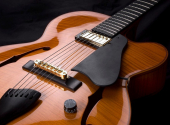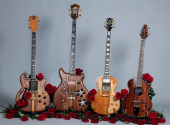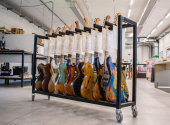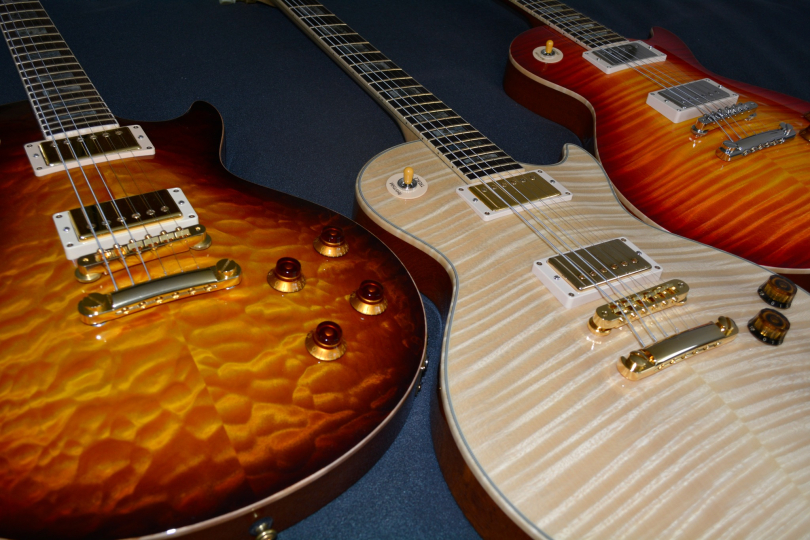
Legendary and Mythical Guitars #7: Halabica Guitars
After a few Western European, US and Asian guitar makers, we will take a peek at Central Europe. After all, from my experience, people in this part of the world make beautiful instruments too. And even though the Slovaks have been independent since 1993, today, we will share the life story of a genuine Czechoslovak.
First meeting
When my elder son was starting his digital agency in the early 2000s and I was helping him find an angel investor, I met several young successful Slovak entrepreneurs from the real estate and finance sector. One of them was Jakub Halabica. When the first official meeting about a possible financial alliance was over, Jakub approached me and said, "You, Mike, you have something to do with guitars, don't you? Do you know my dad makes the best guitars in the world? I have to introduce you." Well, it suits a young man to be confident, I thought at that moment, but at the same time, I was also quite curious about what Mr. Halabica Sr. was doing. And so I met Otto, who has been a good friend and advisor ever since when it comes to guitar matters. I think if that hadn't happened, I probably would never have been able to write a series about guitars.
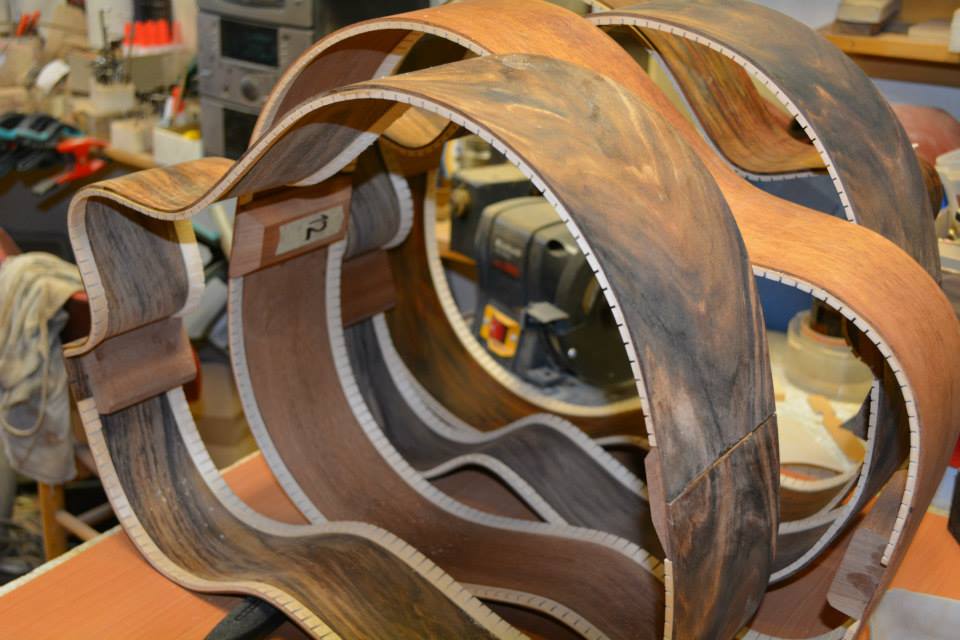
Czechoslovak's biography
Some say that there is no such thing as a "Czechoslovak" and that a person can only be either Czech or Slovak. Well, in Otto's case, it is not quite so clear. He was born in Duchcov and spent his youth in Varnsdorf in north Bohemia. That's where his first two guitars saw the light of day. Otto was only thirteen when the rock'n'roll explosion of the sixties consumed him. He strummed all the famous songs on his acoustic guitar, from the Beatles to the Rolling Stones and Animals. But somehow it wasn't quite the same. With the addition of a pickup and a homemade amp, it was a little better, but he kept dreaming of an electric guitar like his idols had.
And so Otto made his first electric guitar with the support of his dad and his uncle-carpenter. Soon the second, more sophisticated one followed, already with many technological improvements, such as a metal neck bracing in the form of a rod in reinforced concrete. The designer recalls that the biggest problem was to cut it to the required length. The tuners, imported from the GDR, were another source of pride for Otto, who rocked out in local rock'n'roll bands and left the girls in the neighbourhood speechless with awe.
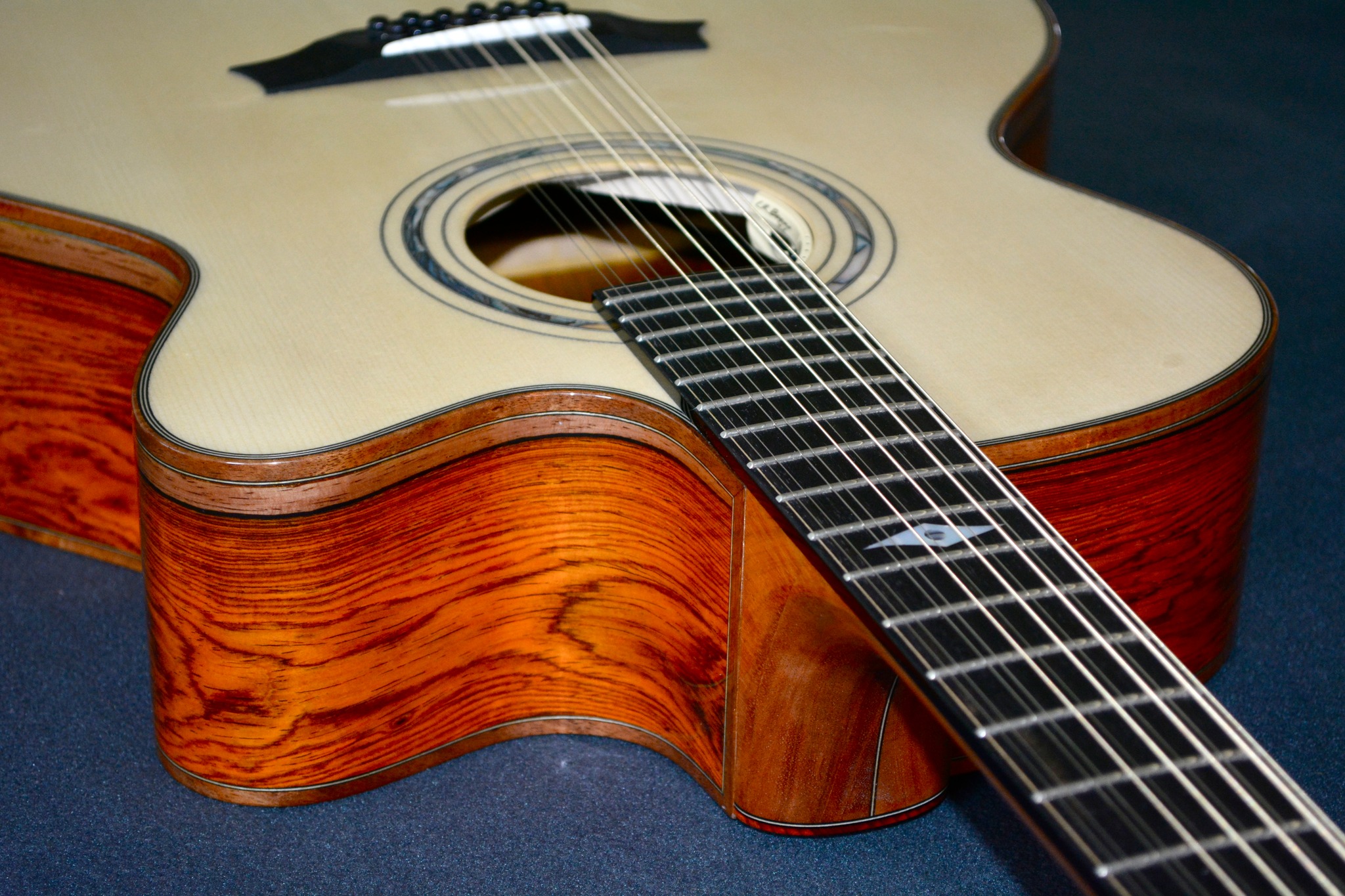
When the boy was sixteen years old, his parents moved to work in Slovakia, where Otto completed his polygraphic education, became naturalised, and after his military service constructed his first acoustic guitar, inspired by the design of the Martin D 42, which he had come across. In an era without the Internet and behind the Iron Curtain, the search for manufacturing know-how resembled the work of security intelligence services. But Otto excelled at that, and gradually pieced together his knowledge of guitar making like a big jigsaw puzzle.
He built more guitars for his musician friends, which was noticed by Public Security and Custom officers. Repeated imports of parts and components of all kinds from so-called non-socialist countries as well as the sale of guitars were met with great resentment by these authorities, and the young guitar maker was thoroughly interrogated several times by comrades interested in his unusual hobby.
It wasn't until 1989 that the situation changed, and Halabica Guitars was among the first companies established in Slovakia. Since then, Otto has been designing and manufacturing acoustic and electric guitars that have gradually found their way far beyond Slovakia's borders.

Products for connoisseurs
So what does Halabica Guitars actually make? Primarily exclusive acoustic guitars, but it can also produce high-precision electric guitars, both with its own design and in shapes that have become kind of an industry standard.
When it comes to acoustic instruments, the range consists of three basic lines, distinguished by body shape: grand auditorium, jumbo and dreadnought. The designation is somewhat misleading, however, as the body shapes only resemble the models of, for example, American manufacturers. They are not their copies, nor is anything else about Halabica guitars.
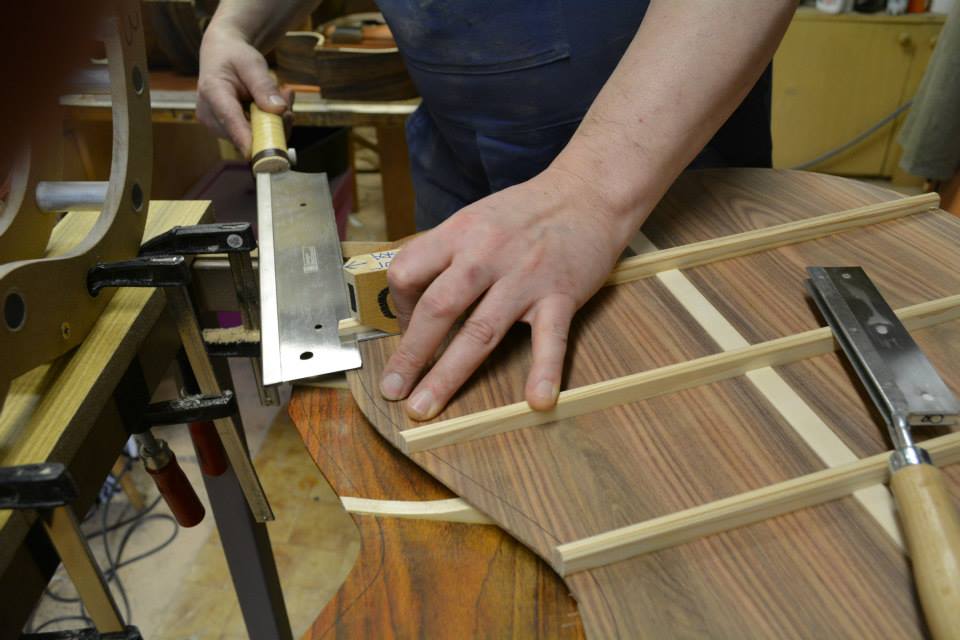
What makes Otto's guitars stand out and why do they play so well? The design emerged from years of development, testing, trials and tweaking leading to the current result, which can be distinguished in every note from bass to treble. The connection of the body to the neck with a dovetail joint, the special bracing pattern, the thickness of the top plate, the custom lacquer composition and other elements, often considered to be production secrets, are some of the reasons why Halabica guitars are exceptional.
Another reason is the utmost attention to the choice of materials. Otto says that he has never used material that he would have ordered and only seen after he unwrapped it. Every single piece of material on the guitar, even the tiniest bit, first passed through his hands before it was used on a guitar. "Mike, you won't believe it, but I lick all the wood," Otto once told me when I asked him how he picks spruce for the tops. According to this unconventional test, he can identify the components in the wood and predict its resonance.
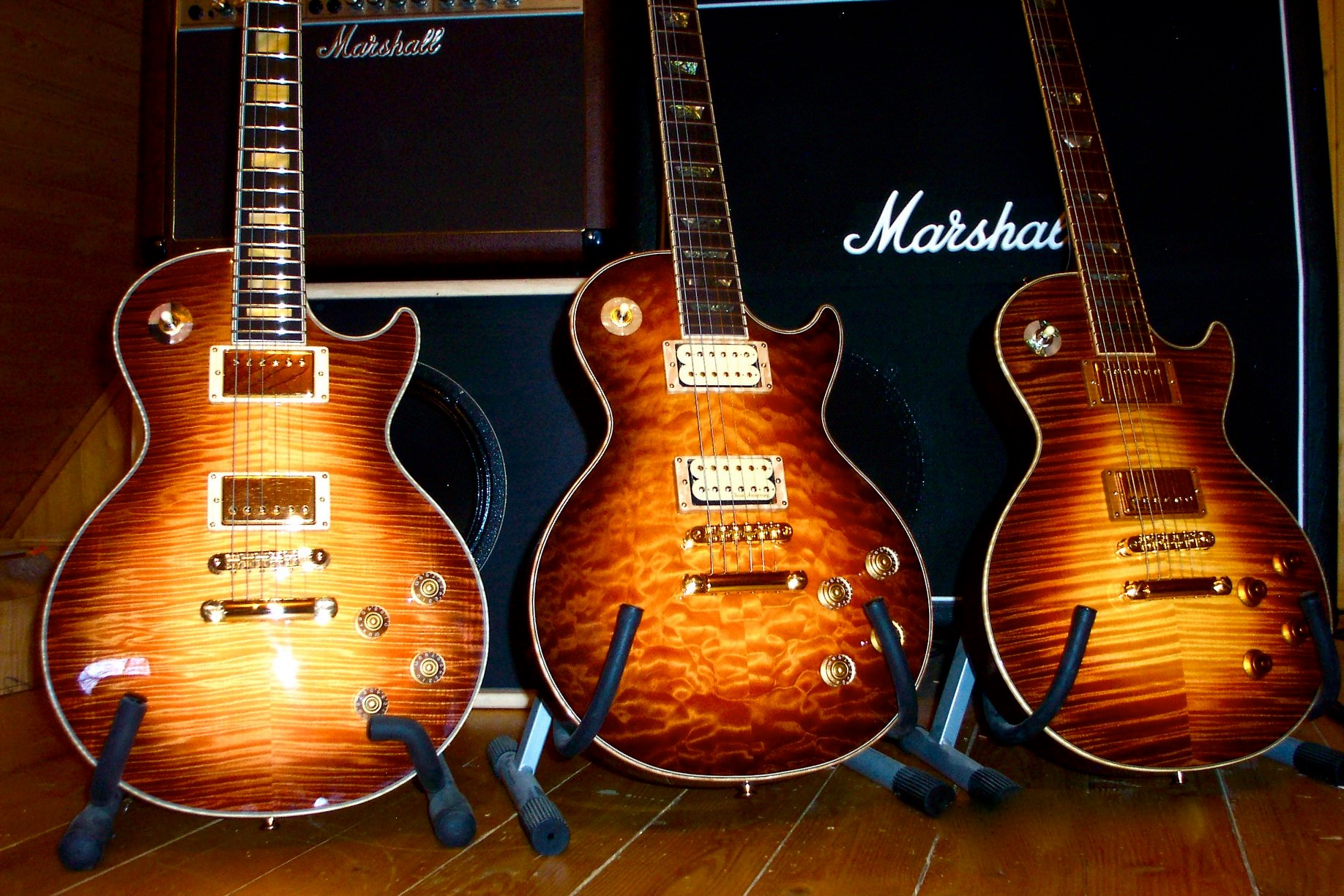
So what is this material that is so carefully and unusually selected? As I have already mentioned, the tops are spruce – and Halabica Guitars are made exclusively of the finest Alpine spruce. For the back and sides, the materials can vary. Rosewood, cocobolo, the less common maple or mahogany. The necks are built from two parts. But they must be made from an identical piece of wood. The fingerboards are mostly ebony, from a carefully selected species. The nut and bridge are made of bone, the binding is made of wood, and the pickups are always L.R. Baggs.
As you can see, Otto has very clear ideas about certain elements of guitar making, which he defends with many years of experience and practice. He doesn't allow any deviations and changes with the comment: "I know what plays best." And his customers seem to appreciate this approach, although some would like to combine the incompatible. But Otto simply won't make a guitar for them.
Let's take another look at electric guitars. Otto developed his own body and headstock design, and his guitars usually have a glued neck. The bodies are usually mahogany or mahogany-maple. Of course, some customers want some of the usual shapes like Les Paul, Strat, Tele, etc. Halabica Guitars also meets these needs but with the company's own know-how. The choice of pickups usually depends on the customer's wishes.
We should mention that for both types of guitars, there is another "one and only" choice, this time concerning the tuners. These are exclusively from Gotoh.
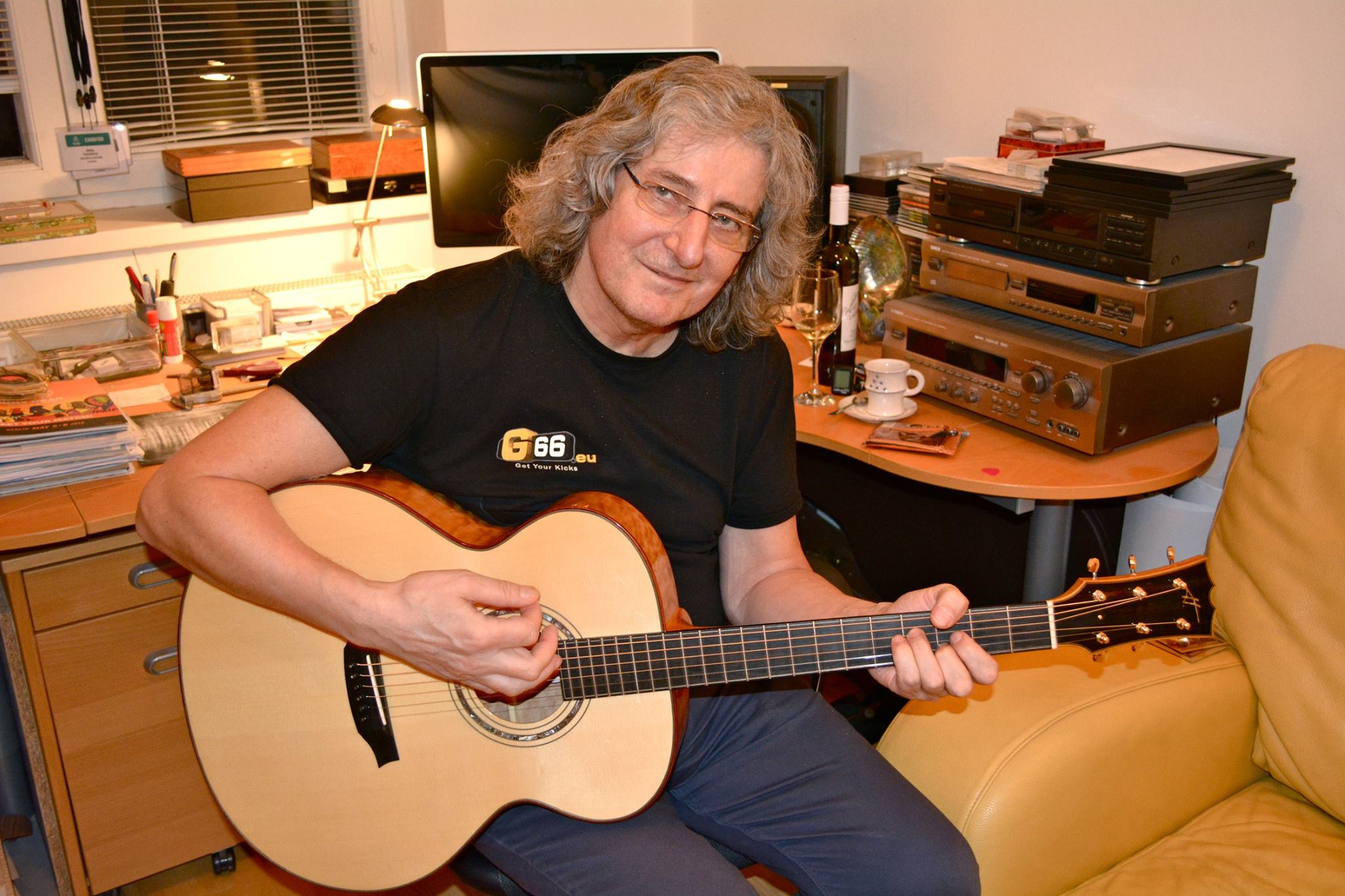
How and for how much you can buy a Halabica guitar
Otto never wanted to be a mass producer and always made guitars for specific customers whose wishes, priorities and needs he would find out in advance. This is also how people usually buy his guitars – they approach him, tell him what they are looking for, and Otto tries to accommodate them.
Still, sometimes he makes an exception. For example, when he gets an order from a very professional and knowledgeable dealer who understands what he is selling and has a large client base that matches the target audience for Halabica guitars. This is the case, for example, with the Dusty Strings store in Seattle, USA, where Otto regularly delivers, or the German Gitarren Studio Neustadt.
Otto's guitars start at around 5,000 Euro and the most exclusive models usually end up somewhere around the 8,000 Euro mark.
Not only Slovak guitarists
As far as Slovak celebrities are concerned, Halabica guitars are already the norm. For example, Pavol Hammel and Fero Griglák represent the older generation and young virtuoso Rony Janeček the younger one.
Otto has never been a manufacturer that chases after famous musicians, offering them free guitars just to take a picture with them, as many manufacturers do. Although international celebrities also own his guitars, he doesn't want to list them anywhere. Let them do the talking. That's his attitude. And if they're not allowed to do it for contract reasons, he doesn't want to name them. So sometimes his friends have to tell him that Kfir Ochaion, Henning Pauly and others have appeared on social media with his guitar.
Halabica Guitars occasionally appear at a show. I had the opportunity to attend the Frankfurt Musikmesse and the Berlin Holy Grail with them. Next year they are going to participate in the Montreaux International Guitar Show for the second time. It is logical that most clients come from Germany, Austria, Switzerland, Benelux and the already-mentioned USA.
To conclude
In both the Czech Republic and Slovakia we could find a number of very skilled luthiers who can make beautiful guitars. This is a sure thing. Not all of them, however, have been able to transcend the borders of their country and succeed in the competition of similarly skilled makers on the global market. Otto Halabica is one of those whose guitars have found their way not only around Europe but also overseas.
Thanks to a clear idea of what a perfect guitar should look like and a bold, original design, the sonic qualities of Otto's guitars attracted players with enough money to buy an instrument from a – marketing-wise – more globally renowned supplier. They ended up choosing a guitar with that weird name, from a country they didn't know where it was – because it just sounded so amazing.

If you have found an error or typo in the article, please let us know by e-mail info@insounder.org.


